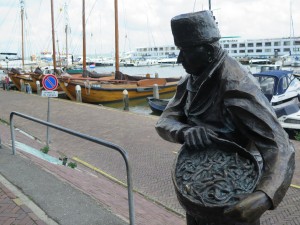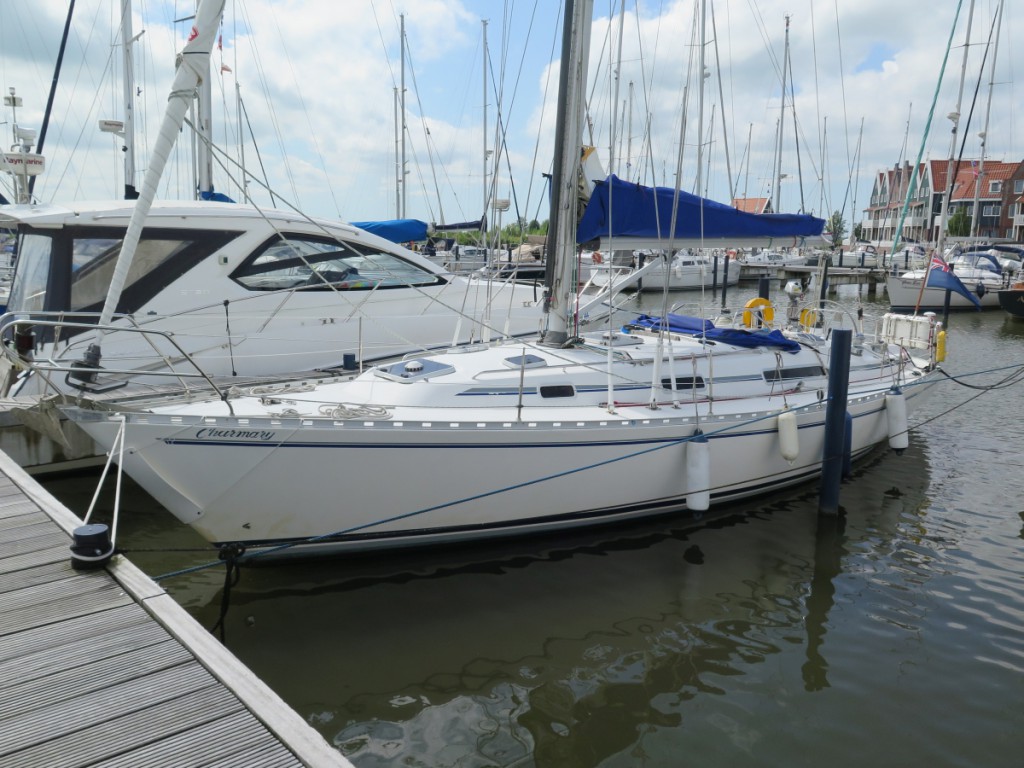Medemblik to Volendam – 27.1 miles in 5 hours and 5 minutes

The day started cloudy and murky and with the bread we had ordered being late, this set the tone for the first part of the day. We had even gone deliberately to the pump-out station to empty the holding tank – concerned citizens that we are – to find that it didn’t work. The harbour master just said “Oh nobody ever uses that …“. So just where does all the ‘waste’ go? Not a question to ponder too long – particularly if considering swimming in the Ijsselmeer … On that note we left into a SE5 – right on the nose. We did sail for half an hour or so under jib only, but when the distance to the waypoint stopped decreasing, it was time to motor through the short lumpy sea. However, it calmed down quickly around Enkhuizen lock where our luck held and we headed straight into the lock.
Once out of the lock, we realised that the wind had shifted from the SE to the SW while we were heading through. Guess what our new course was! Given the fact that the wind had dropped loads anyway and the rain had set in, we simply motored across to Volendam. I made the most of the rain and scrubbed the decks on the way across. Once you’re soaked, you might as well get even wetter. We rang ahead and were allocated a berth – G5, which I was delighted to learn was a box berth. My favourite berths … But, we did OK with this one, the only casualty being the inflatable danbuoy which Anne knocked while trying to get a stern line on the post. At least we know it works now.
We spent the afternoon wandering round Volendam. It does have an interesting history, but now seems to have the feel of Southend-on-Ijsselmeer with hordes of tourists buying tulips, clogs, fish and chips and cuckoo clocks (we didn’t understand that one either!). In the past Volendam was apparently the harbour entrance to Edam, but in 1357 enterprising Edammers dug a new shorter canal to the town removing the need for the port at Volendam. The harbour was then dammed and much of the land reclaimed – hence the name Volendam meaning ‘Filled dam‘. In the early 20th Century it was the place to be for artists and even Picasso and Renoir spent time here. There is also a strong religious connection with most of the population being Roman Catholic and many missionaries and bishops having grown up here.
Eel fishing was an important industry to the village and there are various statues around the town celebrating this heritage.

